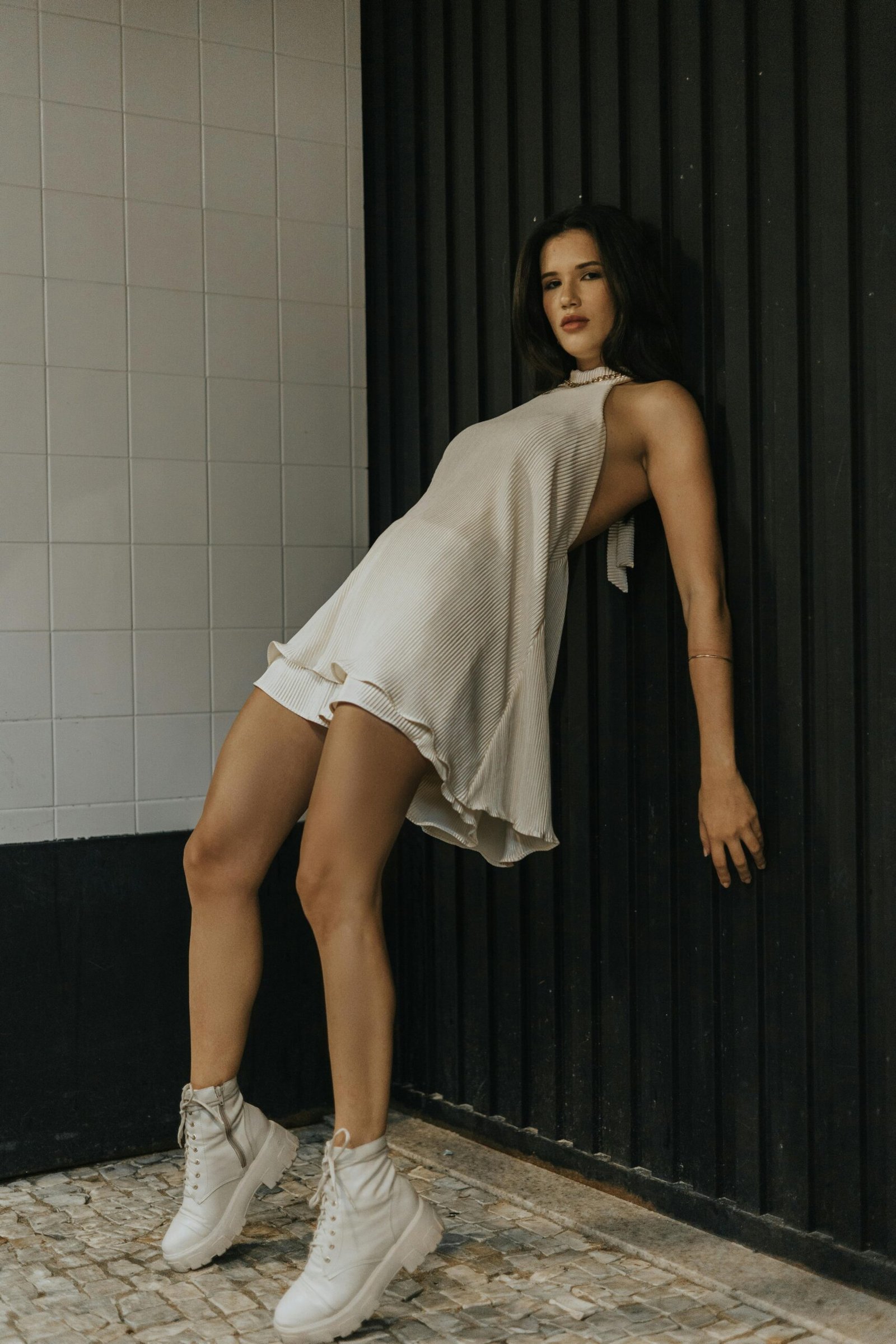Choosing the perfect material for your clothing may seem like a daunting task, but fear not! In this article, you will discover the art of selecting the ideal fabric that not only provides optimal comfort but also enhances your personal style. With a plethora of options available, it can be overwhelming to make a decision. However, armed with the knowledge of different fabrics and their unique qualities, you will be able to choose the perfect material that suits your taste and ensures a comfortable and stylish experience. So let’s embark on this journey of exploring the art of choosing the perfect material for comfort and style.

This image is property of images.pexels.com.
1. Understanding the Importance of Material
When it comes to choosing the perfect material for your clothing, it is essential to understand the importance of material. The material of your garments can greatly affect both your comfort and the style you portray.
1.1 Comfort
Comfort is crucial when it comes to clothing. After all, who wants to spend the day in scratchy or uncomfortable fabric? When considering comfort, it is essential to look for materials that are soft and breathable. These fabrics will allow your skin to breathe and prevent you from feeling sweaty or overheated.
1.2 Style
While comfort is important, style also plays a significant role in the material you choose. The fabric you select can influence the overall look and feel of your outfit. For example, certain materials may give off a more casual vibe, while others can lend an air of sophistication. Understanding the style you want to achieve will guide you in selecting the right material for your garments.
2. Natural Fabrics
Natural fabrics are derived from plants or animals and are known for their comfort and breathability. Here are three popular natural fabrics to consider:
2.1 Cotton
Cotton is a versatile fabric loved for its softness, breathability, and ability to keep you cool in warm weather. It is a natural fiber that absorbs moisture well, making it a great choice for those prone to perspiration. Cotton is also hypoallergenic, making it ideal for people with sensitive skin.
2.2 Silk
Silk is known for its luxurious feel and elegant appearance. This natural fabric is derived from silkworms and has a smooth texture that glides over the skin. Silk is highly breathable and wicks moisture away from the body, keeping you dry and comfortable. It is often used for formal and evening wear due to its lustrous appearance.
2.3 Linen
Linen is a lightweight and breathable fabric that is perfect for hot climates. Made from the fibers of the flax plant, linen is highly absorbent and dries quickly when wet. It has a slightly textured feel and a natural drape, which gives it a relaxed and effortless look. Linen is a popular choice for summer clothing and casual attire.
3. Synthetic Fabrics
Synthetic fabrics are man-made and are designed to mimic the properties of natural fibers. They often offer durability and affordability. Here are three common synthetic fabrics:
3.1 Polyester
Polyester is a durable and wrinkle-resistant fabric that is widely used in clothing. It is a synthetic polymer derived from petroleum. Polyester is known for its strength and ability to retain its shape, even after multiple washes. It is also quick-drying and has moisture-wicking properties.
3.2 Nylon
Nylon is another popular synthetic fabric known for its strength and durability. It is often used in activewear and sportswear due to its moisture-wicking and quick-drying capabilities. Nylon is lightweight and silky to the touch, making it comfortable to wear. It is also resistant to abrasion and stretching.
3.3 Spandex
Spandex, also known as elastane or Lycra, is a stretchy fabric that provides flexibility and comfort. It is often blended with other materials to add stretch and shape retention to garments. Spandex is commonly used in activewear, swimwear, and form-fitting clothing items. Its elasticity allows for ease of movement and a snug fit.
4. Blended Fabrics
Blended fabrics are a combination of natural and synthetic fibers, offering the benefits of both. They are often designed to enhance the comfort, durability, and aesthetic appeal of the garment. Here are three popular blended fabrics:
4.1 Cotton-Polyester Blend
A cotton-polyester blend combines the natural breathability of cotton with the durability of polyester. This blend is commonly used in t-shirts, sweatshirts, and casual clothing. It offers a balance of comfort and ease of care, as it is less prone to wrinkles and shrinkage compared to pure cotton.
4.2 Wool-Blend
A wool-blend combines the warmth and insulation of wool with the added benefits of other fibers, such as nylon or polyester. This blend offers the softness and comfort of wool while improving durability and reducing itchiness. Wool-blend fabrics are often used in outerwear, sweaters, and cold-weather accessories.
4.3 Rayon-Blend
Rayon-blend fabrics are made of cellulose fibers derived from wood pulp. The blend of rayon with other fibers, such as cotton or polyester, enhances breathability and moisture absorption. Rayon-blend fabrics are commonly used in dresses, blouses, and lightweight garments. They offer a soft and flowy drape, similar to natural silk.

This image is property of images.pexels.com.
5. Specialty Fabrics
Specialty fabrics are unique materials that are often associated with specific types of clothing or fashion statements. They offer a distinctive look and feel. Here are three popular specialty fabrics:
5.1 Denim
Denim is a sturdy and durable cotton fabric known for its versatility and timeless appeal. It is commonly used in jeans and casual wear. Denim fabrics are woven in a tight twill construction, making them strong and resistant to tearing. They can be finished in different ways to achieve various looks, such as distressed or faded.
5.2 Leather
Leather is a natural fabric made from animal hides, most commonly from cows. It is highly durable and offers a rugged and luxurious appearance. Leather is often used in jackets, boots, and accessories. It requires proper care to maintain its condition and longevity.
5.3 Velvet
Velvet is a plush and luxurious fabric that originated from silk. It is now commonly made from a blend of synthetic fibers, such as polyester and nylon. Velvet has a soft and smooth texture and is often associated with elegance and sophistication. It is used in formal attire, evening gowns, and upholstery.
6. Performance Fabrics
Performance fabrics are designed for specific purposes, such as outdoor activities or athletic performance. They often offer advanced features to enhance comfort and functionality. Here are three popular performance fabrics:
6.1 Microfiber
Microfiber is a synthetic fabric known for its ultra-soft texture and moisture-wicking properties. It is often used in activewear, as it offers breathability and quick-drying capabilities. Microfiber fabrics are lightweight and provide a comfortable and smooth feel against the skin.
6.2 Gore-Tex
Gore-Tex is a waterproof and breathable fabric used in outerwear and outdoor gear. It is designed to keep you dry in wet conditions while allowing moisture vapor to escape. Gore-Tex fabrics are highly durable and provide excellent protection against the elements, making them ideal for hiking, skiing, and other outdoor activities.
6.3 Merino Wool
Merino wool is a natural performance fabric known for its exceptional insulation and moisture-wicking properties. It is derived from Merino sheep and offers warmth even when wet. Merino wool is often used in base layers, socks, and outdoor apparel. It is also naturally odor-resistant, making it ideal for extended wear.

This image is property of images.pexels.com.
7. Eco-Friendly Materials
If sustainability is important to you, there are several eco-friendly materials to consider. These fabrics are produced using environmentally conscious methods and often have a lower impact on the planet. Here are three popular eco-friendly materials:
7.1 Organic Cotton
Organic cotton is grown without the use of synthetic fertilizers or pesticides, making it a more sustainable option compared to conventional cotton. It is often softer and hypoallergenic, as it is free from harsh chemical residues. Organic cotton is used in a wide range of clothing items, from t-shirts to bedding.
7.2 Bamboo
Bamboo fabric is derived from bamboo pulp and is known for its softness and breathability. Bamboo is a fast-growing and renewable resource, requiring less water and land compared to conventional cotton. Bamboo fabrics are naturally hypoallergenic and offer excellent moisture-wicking properties. They are often used in activewear, underwear, and bedding.
7.3 Hemp
Hemp fabric is made from the fibers of the cannabis plant and is known for its strength and durability. Hemp cultivation requires minimal pesticides, herbicides, and water, making it an eco-friendly choice. Hemp fabrics are breathable and become softer with each wash. They are commonly used in clothing, accessories, and home textiles.
8. Factors to Consider When Choosing a Material
When selecting the right material for your clothing, several factors should be considered:
8.1 Season and Climate
The season and climate in which you will be wearing the garment should influence your material choice. Lighter and breathable fabrics, such as cotton and linen, are ideal for hot summers, while thicker fabrics, like wool and fleece, provide insulation in colder months.
8.2 Activity and Use
Consider the purpose and intended use of the garment. If you are engaging in physical activities or sports, opt for performance fabrics that offer moisture-wicking and stretch features. For formal occasions, materials like silk or velvet may be more appropriate.
8.3 Care Instructions
Be aware of the care requirements for the fabric you choose. Some fabrics may require special care, such as dry cleaning or hand washing, while others can be machine-washed and tumble-dried. Consider whether you are willing to put in the effort to maintain the fabric’s integrity and appearance.
9. Tips for Finding the Perfect Material
To help you find the perfect material for your clothing, consider the following tips:
9.1 Research and Educate Yourself
Take the time to research and educate yourself about different fabrics. Learn about their properties, benefits, and limitations. This knowledge will empower you to make informed decisions when choosing materials for your garments.
9.2 Consider Your Preferences and Needs
Consider your personal preferences, style, and specific needs. Think about the level of comfort you desire, the climate you live in, and the activities you engage in. By understanding your requirements, you can narrow down your options and find the materials that best suit your lifestyle.
9.3 Seek Recommendations and Reviews
Seek recommendations from friends, family, or trusted sources who have experience with different materials. Reading reviews and seeking expert advice can help you gain insight into the durability, comfort, and overall satisfaction of different fabrics.
10. Conclusion
Choosing the right material for your clothing is a balance between comfort and style. Understanding the importance of material and considering factors such as comfort, style, and purpose will guide you in making informed choices. Whether you opt for natural fabrics, synthetic fabrics, blended fabrics, specialty fabrics, performance fabrics, or eco-friendly materials, there is a wide range of options available to cater to your personal preferences and needs. Remember to research, consider your requirements, and seek recommendations to find the perfect materials that make you look and feel your best. With the right material, you can achieve the ideal combination of comfort, style, and self-expression.
